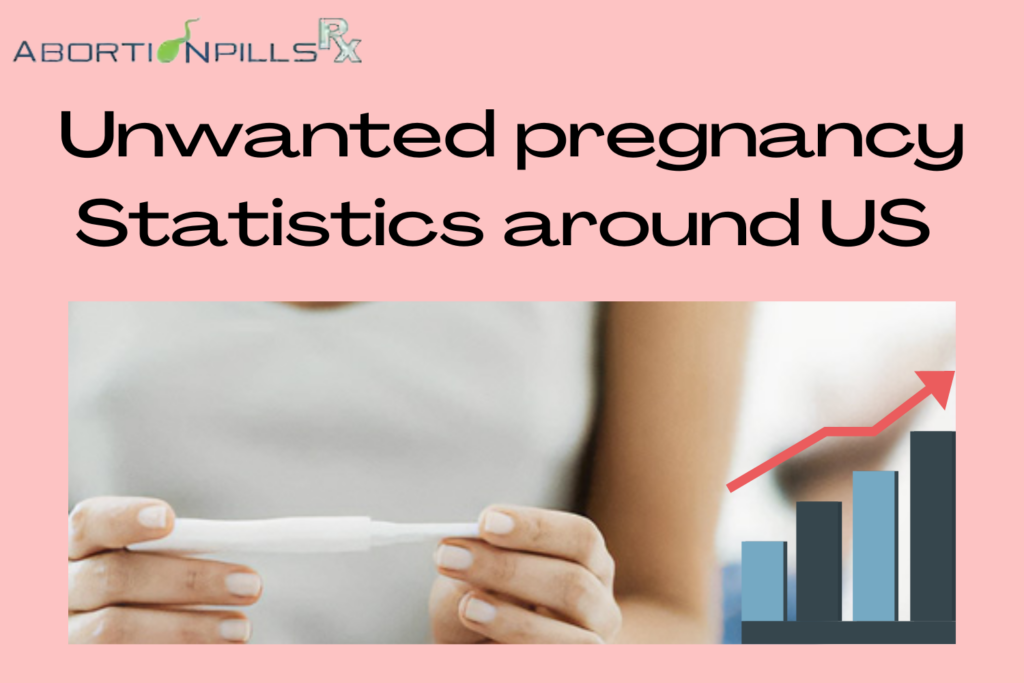
As per statistics, on average women in the U.S want to have children twice in their lifetime. Thus, a female may spend at least 3 years attempting to conceive, postpartum, or pregnant. And this means that for 30 years or more than three-fourths of the time the woman is fertile, she tries to stay pregnancy free. For unintended pregnancy, women prefer Abortion Pills if they are in the first trimester. Otherwise, there is invasive treatment available to end the pregnancy beyond the first trimester.
Below, according to one of the leading research publications, we will showcase the facts on unintended pregnancies in the U.S.A.
Unintended Pregnancies in the United States
- Women aged 15 to 44 in 2011 reported 98 pregnancies out of 1000 cases. In the same age group, 45 pregnancies were unintended in every 1000 instances. This concurs that about 5% of the time when a woman is fertile, unintended pregnancy takes place every year.
- 2.8 million out of 6.1 million pregnancies which is at least 45% of the time women conceived in 2011 were unplanned. 27% of such pregnancies were considered wanted but later, and 18% of these were never desired at any time.
- It is noted that unplanned pregnancy in the U.S. is greater in numbers compared to that in other nations counted into developed countries.
Unplanned Pregnancy and Its Distribution Over the States
It is true that unintended pregnancies happen in the low-income group. Many prefer At-Home Abortion to go to the clinic for invasive termination. This is seen more in females from the age group of 18 to 24 and those living with other women of color, and females who have less than 200 percent of the federal poverty level. The rate is the lowest for women from higher income groups i.e., at or over 200% of poverty, college graduates, white women, and married women.
- 112 per 1000 women in 2011 with income less than 1000 of the federal poverty line experienced unplanned pregnancy, which is greater than five times that of females with 200% of poverty i.e., 20 incidences in every 1000.
- As the age of the woman advances, the ratio of unintended pregnancy reduces and the highest number is seen among females within the age group of 20 to 24 with at least 81 cases reported in 1000.
- It is important to observe that those between 15 and 19 years of age also have a high rate of undesired pregnancy. Females who did not have a high school degree also reported the highest rate of unplanned pregnancy than those with some educational background. The figure stood at 73 in 1000.
- 141 women in 1,000 who cohabited with other women conceived without intending to, and the number reduced to 36 to 54 for non-cohabiting females and 29 per 1000 for married women.
- And for non-Hispanic black females, the figure stands at 79 per 1000 whereas, for non-Hispanic white women, it is 33 per 1000.
Unwanted Pregnancy Rate Throughout the Years
To end an early pregnancy, women could access MTP Kit Online to avail of Mifepristone and Misoprostol pills for abortion. There are providers approved by the state who dispensed the medicines at health centers as well. In the U.S.A, the unintended pregnancy rate grew between 2001 and 2008, which is a growth from 48% to 51%. But the rate reduced to 45% by 2011. Here are more statistical data to know:
- Women in the age group of 15 to 44 saw a reduction of 18% i.e., 45 in 2011 from 54 in 2008 in every 1000 incidences. This rate was the lowest since 1981 and further, the rate of unwanted pregnancies could decrease given different methods of birth control.
- But from 1981 to 2008, the rate of unplanned pregnancy rose in women from low-income groups, and the same declined for women belonging to higher-income groups.
- Females in the age group of 18 to 19 saw a fall of 20% in unintended pregnancies and a 21% decline in unplanned births.
- Those in the age group of 15 to 17 saw a decline of 44% in this duration and a 47% reduction in the unplanned birth rate.
Final Thoughts
Unintended pregnancies are common in the U.S.A. And the nation ranks one of the top ones for unwanted pregnancies for women across every age group. Though the rates declined over years, the use of birth control played a key role in making that possible.


